How to spray tomatoes from late blight in a greenhouse
Phytophthora is perhaps the most common fungal infection that occurs on tomatoes. It mainly affects plants grown in greenhouses. Unfortunately, the spread of the disease is often facilitated by the lack of basic knowledge about the nature of the pathogen and the conditions that provoke its active development. About all this, as well as how to protect the culture from being infected by a fungus, which chemicals and folk remedies are considered the most effective and safe for late blight, is described in this review.
What is late blight
The causative agent of late blight is the Phytophthora fungus. It is interesting that literally the name “phytophthora” can be translated from ancient Greek as “killing plants” (from “φῠτόν” - a plant and “φθαρτικός” - destroy, kill, destroy). Phytophthora mycelia belong to the department of oomycetes, lower non-cellular fungi that parasitize on various plants and, as the name implies, leading them to decay, decay and complete death. Phytophthora can infect trees, shrubs and grasses, and each of the many species of this fungus has its own preferences.
Did you know? In the middle of the nineteenth century, Ireland was struck by the Great Famine, which lasted 4 long years. The culprit of this disaster was precisely the oomycete Phytophthora infestans, who destroyed a significant part of the potato harvest.
So, for example, Phytophthora infestans prefers solanaceous crops, primarily tomatoes and potatoes. The parasite can remain throughout the winter in the soil where its favorite crops grew, but it also winters wonderfully on plant debris (tops) and, what is most unpleasant, on seeds and tubers. Thus, in a new garden, a disease can appear in at least 2 ways: from contaminated land or infected planting material. In addition, Phytophthora oospores are able to form when two different mycelium fungi meet by combining the male and female microorganisms.

Reasons for development on tomatoes
The presence of mycelium in the soil and even on the seeds does not mean the automatic development of the disease. To defeat the plant, it is necessary that the parasite begins to grow actively.
Learn how to treat late blight tomatoes with serum and iodine.
Conditions conducive to the active growth of Phytophthora include:
- Oversaturation of the soil with nitrates (abuse of nitrogen fertilizers).
- Density of planting (non-observance of the distance between individual plants, ignoring the requirements for the correct formation of a bush, removing stepsons and excess leaves).
- Lack of potassium, manganese, phosphorus, copper or iodine in the soil.
- Weak lighting of bushes (for normal growth, tomatoes need daylight hours, lasting at least 18 hours).
- Neighborhood of weeds.
- The combination of hot weather and high humidity (just pour tomatoes over the leaves on a sunny day, and the fungus will immediately make itself felt).
- Unexpected cooling down to 15 ° С and lower in combination with moist air.
- Strong differences between day and night temperatures (contribute to the formation of dew on the leaves).
- Humidity above 75%.
- Lack of airing.

Did you know? We risk the maximum dose of nitrates hazardous to health from sorrel, lettuce, dill or parsley, as well as radishes, beets, black radish, rhubarb and celery. But in berries, fruits and cereals, salts and esters of nitric acid in critically high concentrations do not accumulate. Interestingly, vegetables grown in greenhouses contain significantly more nitrates than the same crops grown in open ground.
Despite the fact that Phytophthora often affects tomatoes in open beds, plants are much more at risk under the film, since condensation forms on the walls, ceiling and green parts of plants after each watering, and the evaporation of such moisture indoors is very slow.

First signs of defeat
The incubation period in late blight is 7-10 days. After this period, very characteristic symptoms appear on the affected plants, due to which the disease received an alternative name - "brown rot". Infection affects all the aerial parts of the plant, mutilating and deforming them.
Important! Late blight is able to quickly destroy up to 70% of the tomato crop, as well as affect other crops growing near the greenhouse.
The distinctive signs of brown rot on different organs of tomatoes look like this:
| Leaves | The appearance of spots of different shades of brown, first on the lower leaves, then along the entire height of the bush. The edges of the leaf become whitish, the lower part is covered with a light coating. Over time, the leaf turns yellow, dries and falls off. |
| The stalks | The appearance and gradual growth of brown spots without plaque; drying or decay (depends on the level of humidity). |
| Flowers | Drying and shedding, pollination does not occur |
| Ovary | Blackening and dying |
| Fruit | Dark seals on the pulp (visible through the skin). The flesh acquires a brown tint, loses density. The fruit softens and deforms, becoming unusable and collecting seeds. |
Brown rot develops rapidly, therefore, adequate measures must be taken already at the onset of the first symptoms, without waiting for the infection to spread to neighboring bushes. The faster you process the tomatoes, the higher the likelihood that you can get rid of late blight even at the flowering stage, before the first fruits appear on the bushes.

Processing tomatoes from late blight in a greenhouse
The drugs used to treat late blight, belong to the category of fungicides (“fungus” in Latin means “mushroom”, “caedo” means “kill”). These substances can have a different nature and degree of toxicity, therefore, depending on when the tomato blight occurred, the most effective and at the same time safe means is selected (it is clear that pouring reddening tomatoes with strong poison is completely unacceptable).
Chemicals
Chemicals are not the best choice for fighting brown rot. Such remedies usually show high efficiency, but it is possible to consume tomatoes after such a treatment only after a long time, and even in this case, the risk of getting into the body a dangerous "chemistry" remains. Therefore, they resort to systemic fungicides only in cases where the disease progresses and it is no longer possible to stop it with milder means.
Important! It is not necessary to deal with brown rot with the help of preparations containing chlorine. Phytophthora is resistant to this element, but irreparable damage can be caused to soil.
In particular, for processing are used:
- Bordeaux mixture (100 g of copper sulphate and about 120 g of slaked lime per 1 liter of water);
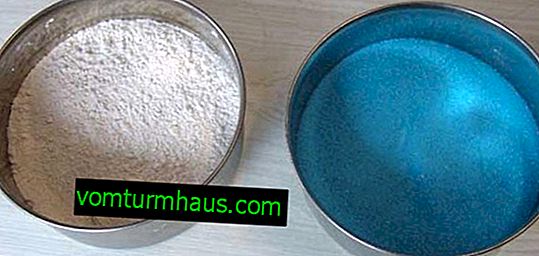
- copper sulfate (2 tablespoons in 1 bucket of water);
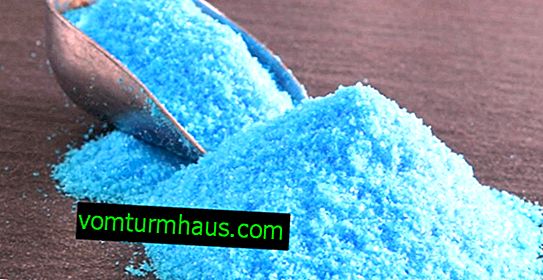
- copper oxychloride (30–40 g per 1 bucket of water) and some other pesticides.
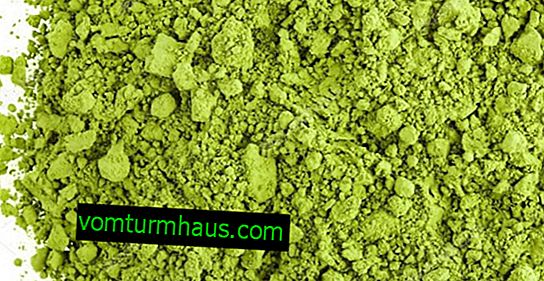
Did you know? Interestingly, K. Marx and F. Engels called late blight one of the reasons for the bourgeois-democratic revolution in France in 1848.
Among the finished drugs, such means showed themselves well:
- "Topaz";
- "Barrier";
- "Ridomil Gold";
- "Ridomilos";
- "Ditan";
- "Bravo";
- "Barrier";
- Tiovit Jet;
- Home [/ url]
- "Fundazole";
- Previkur;
- Quadrice
- "Kuproksat";
- "Infinito";
- "Concento";
- "Ordan" and others.
Sometimes, pharmacy antifungal agents and antiseptics are used to combat brown rot, for example:
- "Furacilin" (1 tablet per 1 liter of water);
- "Trichopolum" (2 tablets per 1 liter of water);
- "Metronidozole" (2 tablets per 1 liter of water);
- calcium chloride (100 ml per 1 liter of water).

Read also about how to deal with the top rot of tomatoes in a greenhouse.
In addition to it, you can recommend trying other biological products, for example:
- "Baikal EM";
- "Radiance";
- Planzir
- Fitoftorin;
- Bactofit;
- "Phytocide M";
- Trichodermin;
- Alirin B

Folk remedies
Some conventional remedies can be classified as relatively safe, although not always effective methods of combating the brown rot of tomatoes.
Did you know? Science knows about 70 species of fungi belonging to Phytophthora. In the world there is not a single continent on which this parasite would not be present, and practically no cultivated plant that would be absolutely resistant to its attacks.
So, for example, according to experienced summer residents, phytophthora can be eliminated with:
- Fresh whey fat content of not more than 1%. If necessary, the liquid is diluted with water.
- Milk 10% solution with iodine (1 liter of skim milk in 9 liters of water plus 15 drops of iodine). Iodine in this recipe can be replaced with hydrogen peroxide, 9% vinegar or potassium permanganate.
- Garlic infusion (peel a few heads of garlic and squeeze in 1 bucket of water, let it brew). Instead of cloves of garlic, you can use the green parts of the plant, as well as the husk.
- Coniferous broth (finely chop pine needles, combine with water in a ratio of 1: 5, bring to a boil, strain, dilute with 10 parts of water).
- Saline 10% solution. This is a radical remedy that can completely burn the leaves, but at the same time save healthy fruits from infection.
- Tobacco-ash infusion (300 g of ash and 2 cups of tobacco chips in 1 bucket of water). The dry ingredients must first be mixed with a small amount of water, boiled for 30 minutes, then the precipitate is decanted, the resulting liquid diluted with the remaining water and immediately used. Instead of spraying, sometimes you can just shower the affected bushes with sifted wood ash.
- Infusion of rotting straw and urea (1 kg of straw and 200 g of urea per 10 liters of water, insist 3-4 days).
- Cow dung (0.5 l per 1 bucket of water).
- Tinder fungus (chop 100 g of pulp, pour 1 liter of boiling water, cool, strain and use immediately).
- Baking yeast (100 g per 1 bucket of water).
- Soap solution of soda and oil (2 tablespoons of baking soda, 1 tablespoon of vegetable oil and 200 ml of liquid soap in 1 liter of water).
All the mentioned tools are used in a standard way. You should choose a dry day, wait for the sun to set, and very carefully spray all the aboveground parts of the plant and the soil around it with the prepared preparation so that the liquid literally drains from the leaves. After about a week, if necessary, the procedure must be repeated. Among the popular folk methods of controlling late blight are cigarette fumigation of beds, as well as the use of thin copper wire, which is cut into pieces and inserted into the stem of the tomato, piercing it through (twisting around the stem of the desired effect, it is claimed, does not give).

How to cultivate the soil after tomatoes infected with late blight
Regardless of whether it was possible to defeat late blight in tomatoes, after the harvest is completely removed from the garden, the infected soil must be seriously treated. Do not flatter yourself: it is almost impossible to completely destroy the pathogen in the ground, so next year it is best to move the tomato bed to another place, and plant non-solanaceous crops on the old site.
You will also be interested to learn how to deal with late blight on tomatoes with the help of folk remedies.
But if the greenhouse is capital, then all that can be done to disinfect the soil is to try to maximally nourish its killer microflora for Phytophthora. To do this, the beds are abundantly watered with a solution of “Fitosporin” or any of the above biological products, diluted according to the manufacturer's instructions. Some summer residents recommend using Bordeaux fluid, although the most experienced of them recognize that this method does not completely kill the fungus.

Disease prevention
Owners of large agricultural land solve the potential problem of late blight on tomatoes simply and radically: the fields are regularly treated with potent fungicides, and during rains this procedure can be carried out every week, including the fruiting period. A summer resident who cares not only about the volume of the crop, but also about its safety for health, a similar method is unlikely to suit.
Read more about what diseases of tomato seedlings are.
Therefore, those who want to have tasty and healthy tomatoes on the table need to take completely different actions to prevent the infection of tomatoes with late blight. Such work lasts all season and includes such events:
- Preparation of beds for next year. Peat and humic fertilizers of the type “Flora-S” or “Fitop-Flora-S” (in the last, in addition to humic acids, hay bacillus is also contained - a natural fungicide used also in the above-mentioned preparation “Fitosporin”). You can also add biological preparations of the Trichoderma type and the same Phytosporin to water for irrigation. In this way, phytophthora pathogens will be destroyed in the soil even before seedlings are planted in it. Moreover, beneficial soil bacteria will accumulate in the soil and protect young seedlings from those parasites that will be introduced into it later (with the wind, with seeds, etc.).
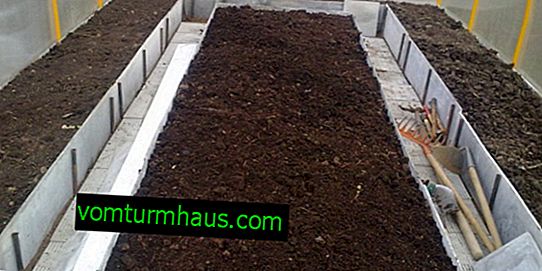
- "Dry watering . " Under this term, experienced gardeners understand the use of mulch from siderat plants. It turns out that for normal development, Phytophthora fungi need not only a donor plant, but also certain substances found in the soil, in particular iron. On the roots of some plants, such as oil radish or mustard, there are special bacteria that extract iron from the earth and process it into a form that tomatoes can absorb. Thus, in such a neighborhood, tomatoes get the nutrients they need, but the fungus that parasitizes on them remains hungry. Siderata can be planted in the garden in the fall, if the number of warm days remaining until frost allows the plants to form, or can be used as ground cover material already during planting.

- Crop rotation. According to established recommendations, the repeated planting of tomatoes (as well as other plants of the solanaceous family) on the same bed is possible no earlier than 5 years later. Of course, in the conditions of a small suburban area, the fulfillment of such a condition looks like utopia, however, you still need to try to alternate cultures in different areas of the land, choosing the right "predecessors" and "followers".
- Disinfection of the substrate for seedlings. Even if the soil mixture for seedlings purchased in a store, it is still recommended to treat it with biofungicide (for example, “Fitosporin” or “Trichoderma”). The procedure is carried out twice - 4 and then 2 weeks before sowing seeds.
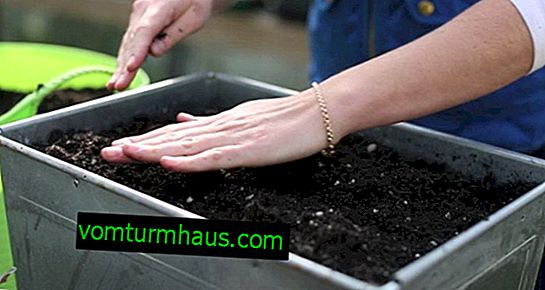
- Seed dressing . To kill the “dormant” spores of the fungus in the seeds, they should be kept for 36 hours in a peat-humic preparation and in a biofungicide. The exception is the seeds of some European hybrids that have undergone the necessary processing at the stage of preparation for sale. For such seed material, additional soaking and replenishment can be detrimental, therefore, when buying expensive seeds of imported production, you always need to check with the seller if they need pre-sowing preparation.
- Long seed exposure. Some gardeners using seeds of their own collection for planting tomatoes sow them no earlier than in the 3rd or even 4th year. It is believed that such a period of late blight without nutrition cannot withstand, although seed germination is still preserved.
- Spring bed preparation. Before planting seedlings in a greenhouse, the soil must again be treated with biofungicide. Moreover, the drug must not be poured into the hole into which the bush will be planted, but it is to water the entire garden with it.
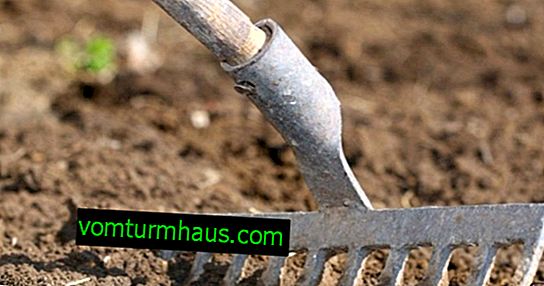
- Compliance with the recommended landing pattern. For determinant tomatoes, the distance between the bushes of 40 cm is considered optimal, and tall varieties will require at least 50-60 cm of “personal space”.
- Preventive spraying. This procedure can be carried out several times during the season, although some gardeners do it weekly. Вместо «тяжеловесных» фунгицидов лучше пользоваться перечисленными выше народными средствами или биопрепаратами.
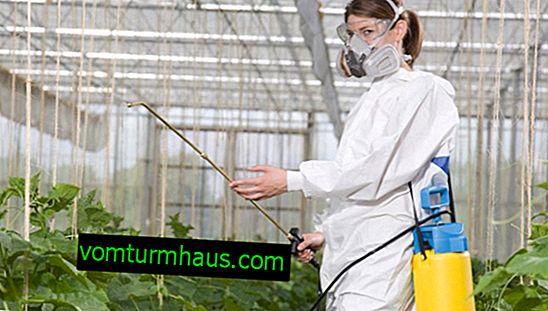
- Сбор и удаление растительных остатков с грядки после сбора урожая. Именно в томатной ботве фитофтора чувствует себя особенно комфортно, поэтому оставлять такой биологический материал на зиму нельзя. Однако если растение не болело, снятую ботву можно мелко порубить и заделать в почву одновременно с неглубокой перекопкой. Замечено, что помидоры очень хорошо растут на земле, обогащённой собственными перегнившими остатками.
- Максимальное территориальное разделение грядок с томатами (в том числе закрытых) и участков, на которых выращивается картофель — второе излюбленное лакомство Phytophthora. Семена помидоров, если они собраны самостоятельно, также важно хранить подальше от картофельных клубней.
- Использование сортов, устойчивых к заболеванию .
Resistant varieties
В течение последних десятилетий между учёными и микроорганизмами, вызывающими опасные инфекции, идёт своеобразная игра на опережение: первые пытаются создавать сорта и гибриды, устойчивые к патогену, а также эффективные лекарства против него, а вторые видоизменяются, формируя расы и штаммы, способные обойти новые научные разработки.
Узнайте почему трескаются помидоры при созревании в теплице.
Этой гонке не видно конца, поэтому рассчитывать избавиться от фитофтороза на грядке, высадив на неё какой-то чудесный сорт помидоров, было бы наивно. И всё же существуют томаты, проявляющие относительно высокую устойчивость к самым распространённым расам Phytophthora. В теплицах, где риск заражения всегда выше, лучше высаживать именно такие сорта или гибриды. Here are some of them:
- «Академик Сахаров»;
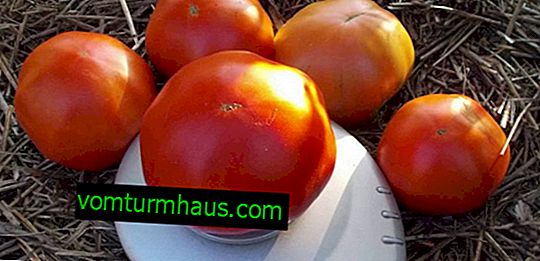
- «Гном»;
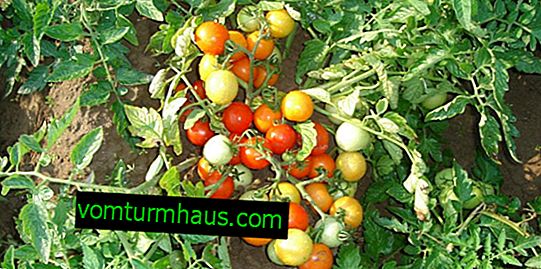
- «Де Барао чёрный»;

- "Oak";
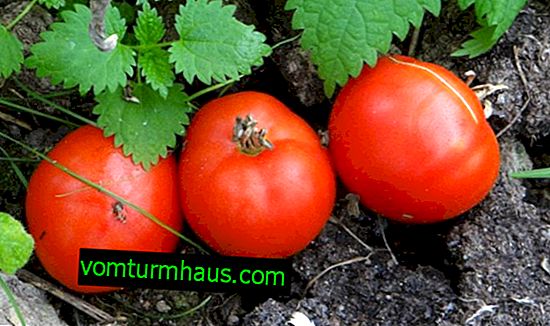
- «Кардинал»;
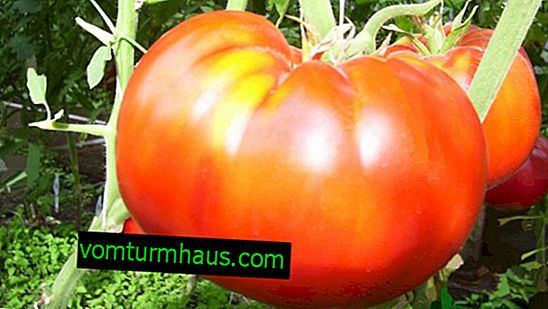
- Carlson
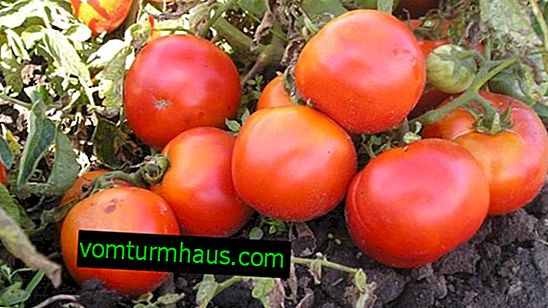
- «Каротинка»;
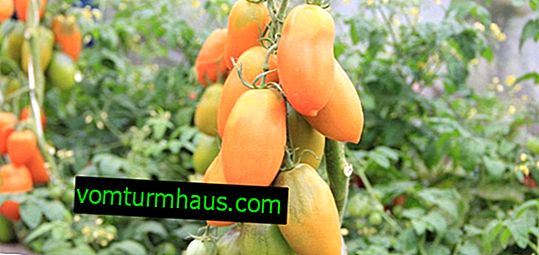
- «Лентяйка»;
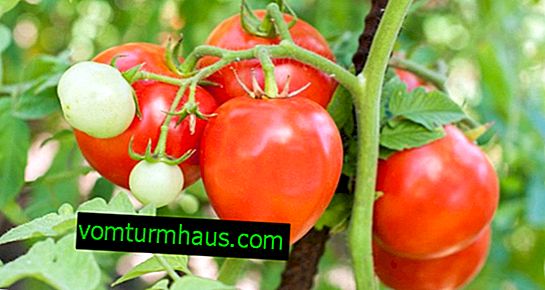
- «Маленький принц»;

- «Персей»;
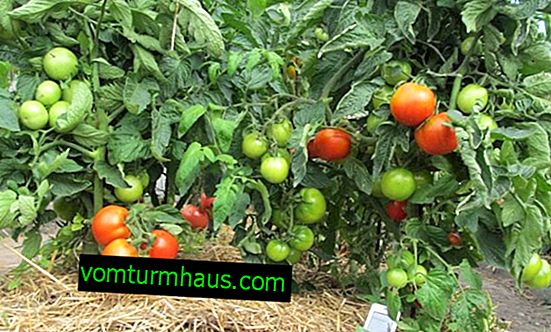
- «Оранжевое чудо»;
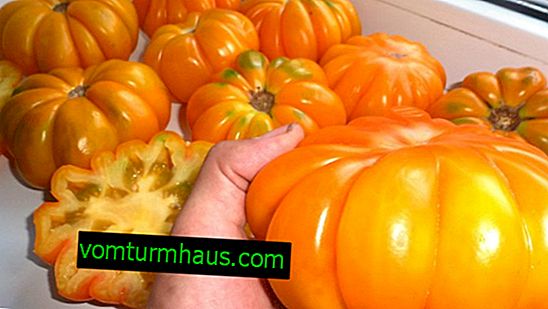
- «Отрадный»;
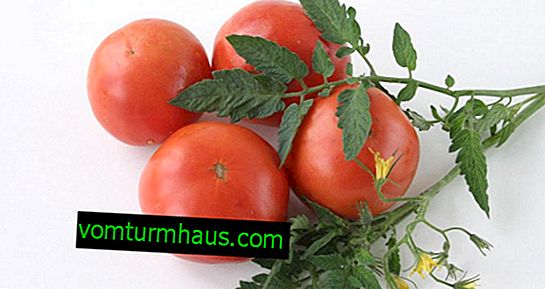
- «Ракета»;
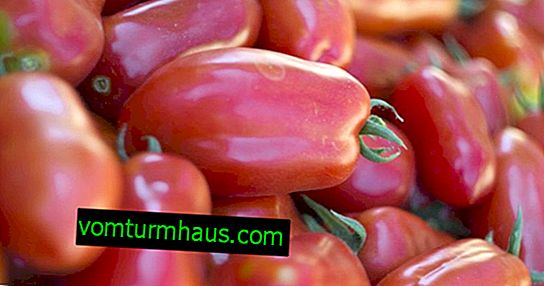
- «Ранняя любовь»;
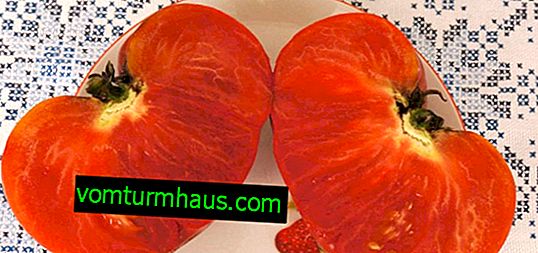
- «Резонанс»;
- «Солнечный»;
- «Татьяна»;
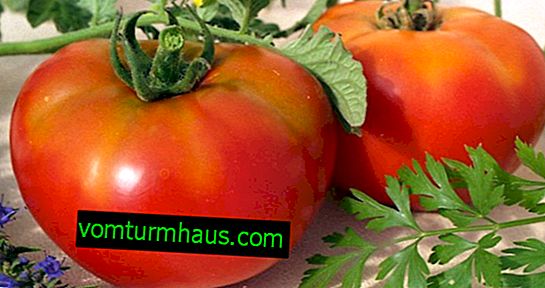
- «Царь Пётр»;
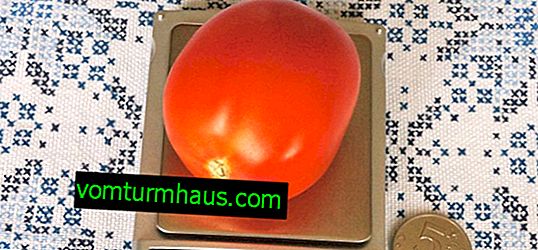
- «Яблонька России»;

- «Японский краб».

Important! Поскольку Phytophthora комфортнее всего чувствует себя при жаркой погоде и высокой влажности, вспышки заражения обычно начинаются не ранее конца июля. По этой причине все сверхранние и ранние сорта или гибриды томатов потенциально считаются устойчивыми к фитофторозу.
Если говорить о гибридах, то в список устойчивых к фитофторе томатов можно включить такие:
- «Дульче» («Корнабель F1»);

- «Жаворонок F1»;
- «Ля-ля-фа F1»;
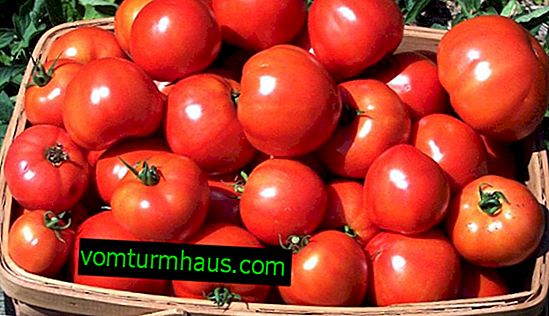
- «Махитос F1»;
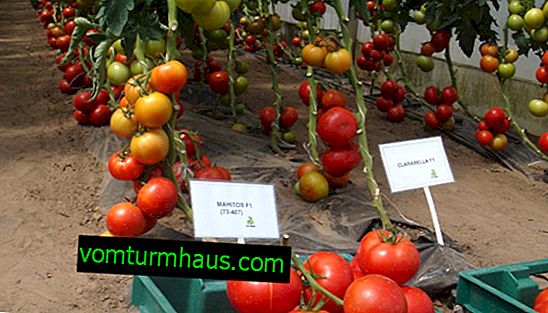
- «Метелица F1»;
- «Новогодний F1»;
- «Полбиг F1»;
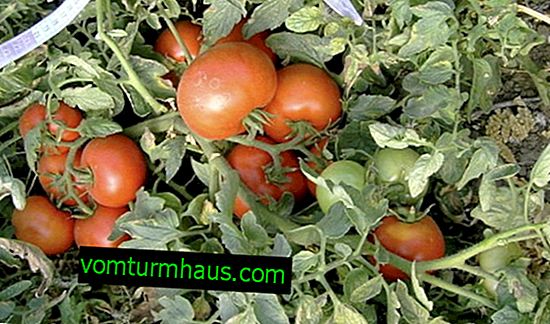
- «Союз-8 F1» и многие другие.

To summarize. Полностью защитить помидоры в теплице от фитофторы невозможно. Однако грамотно спланированные и вовремя проведённые агротехнические мероприятия позволяют в значительной степени уменьшить риск развития этой опасной грибковой инфекции и сохранить урожай, не прибегая к помощи сильнодействующих и опасных для здоровья пестицидов.



































